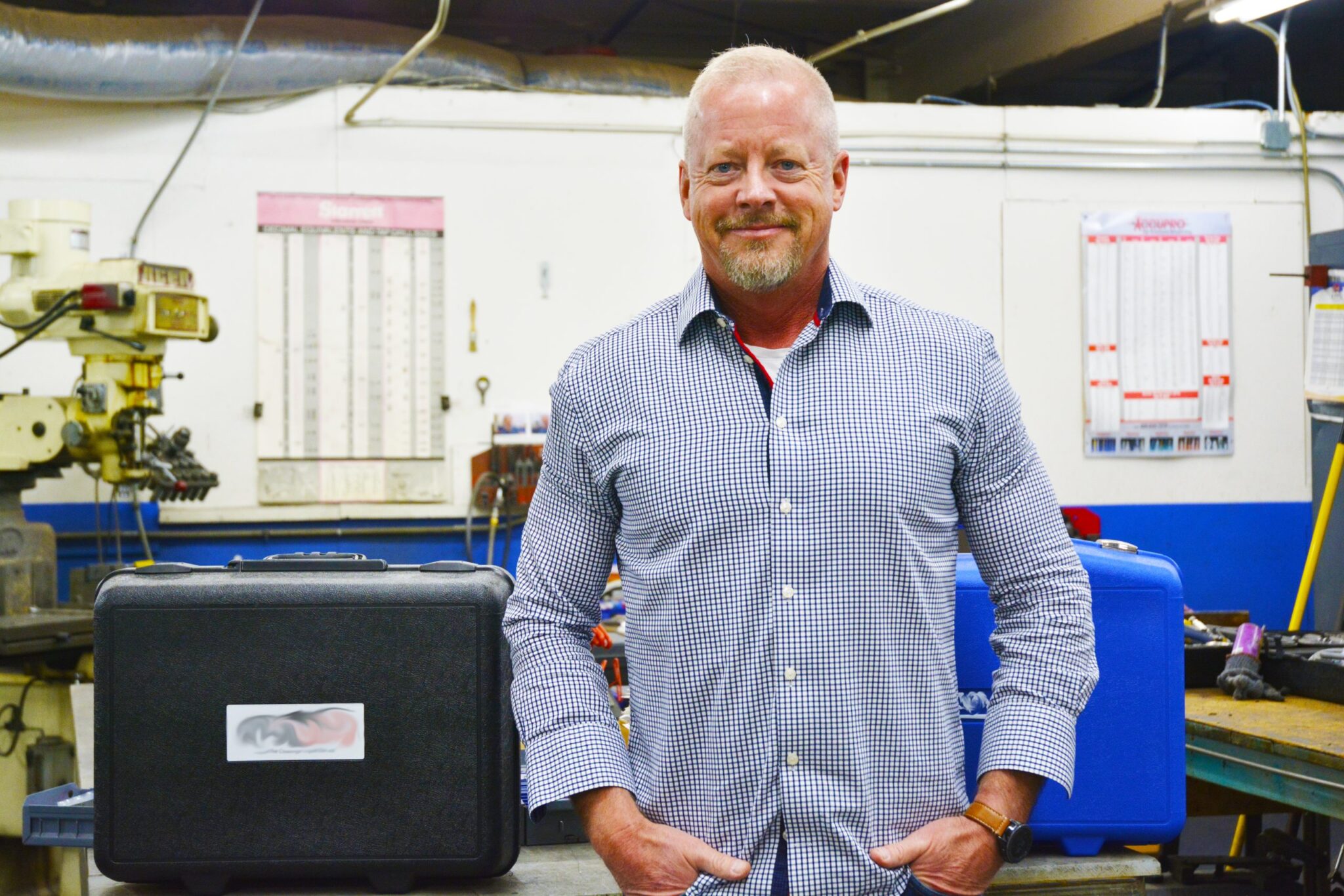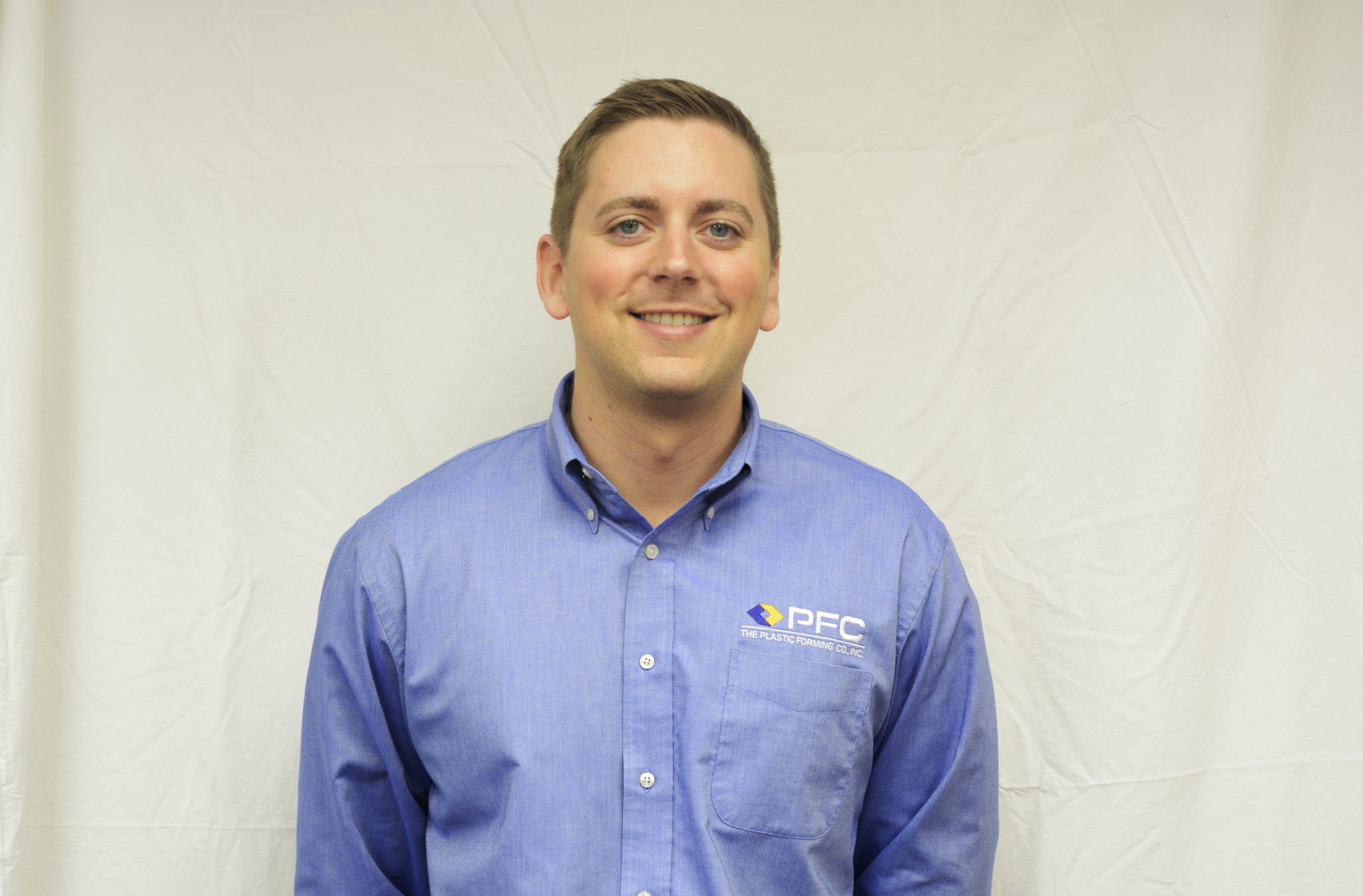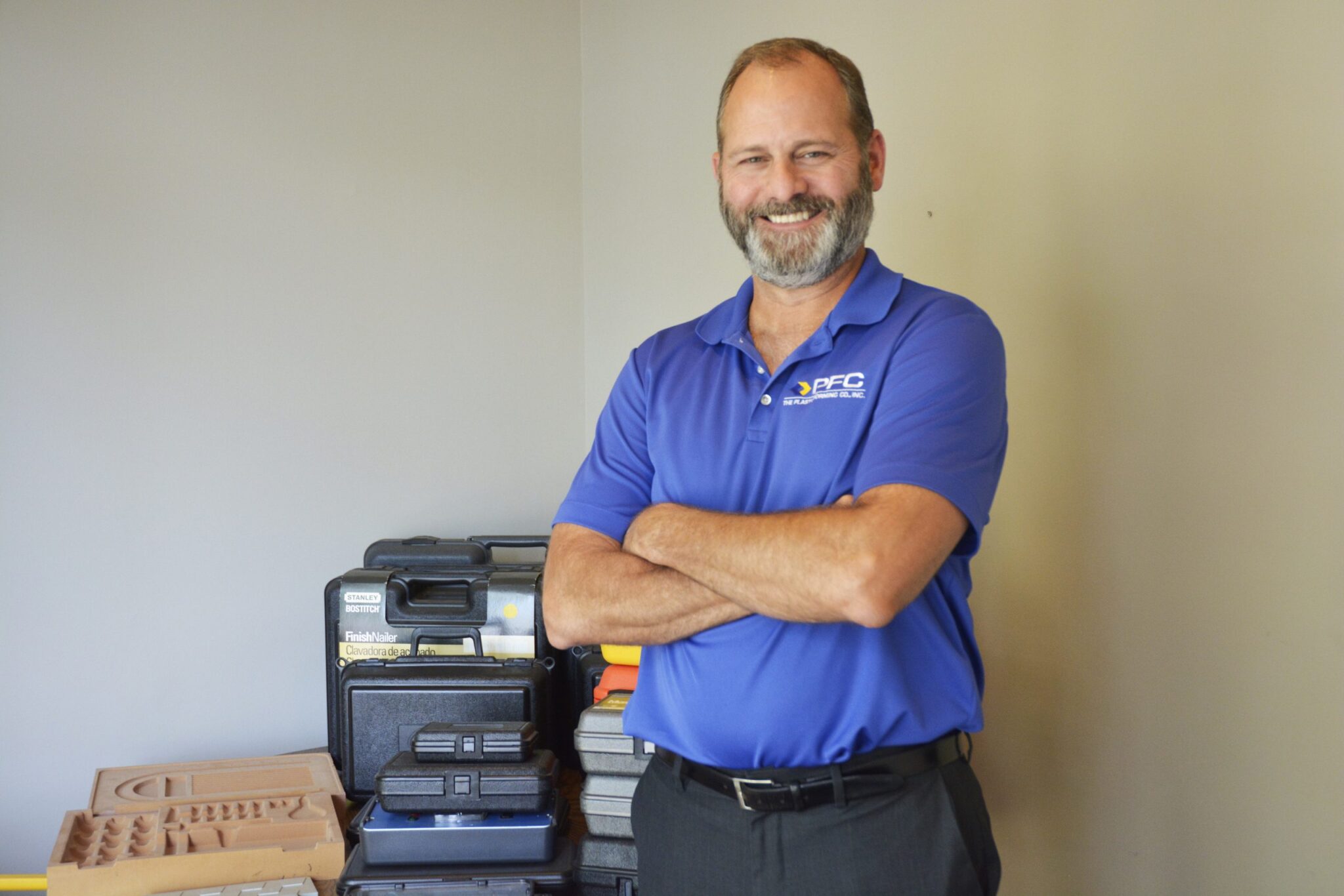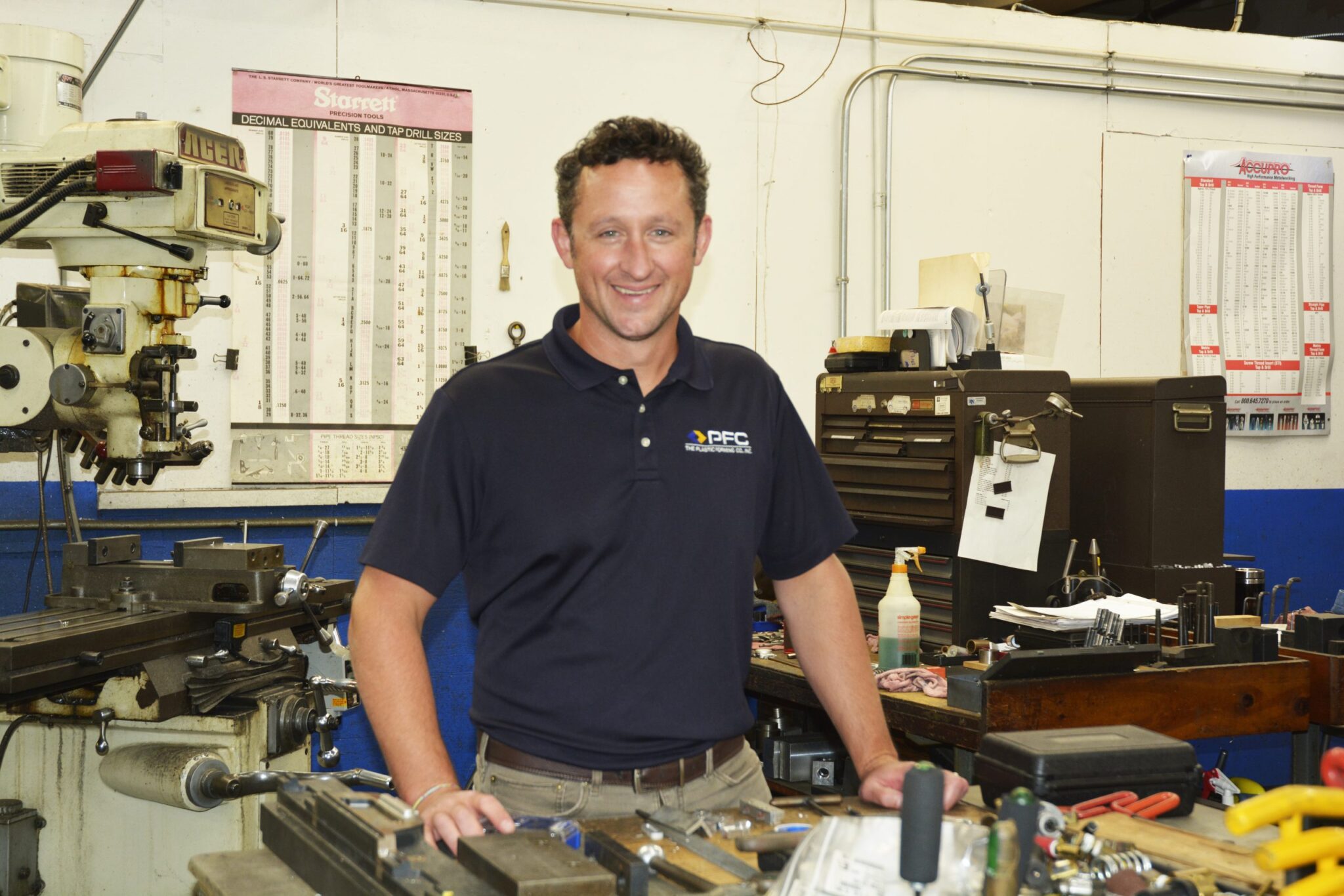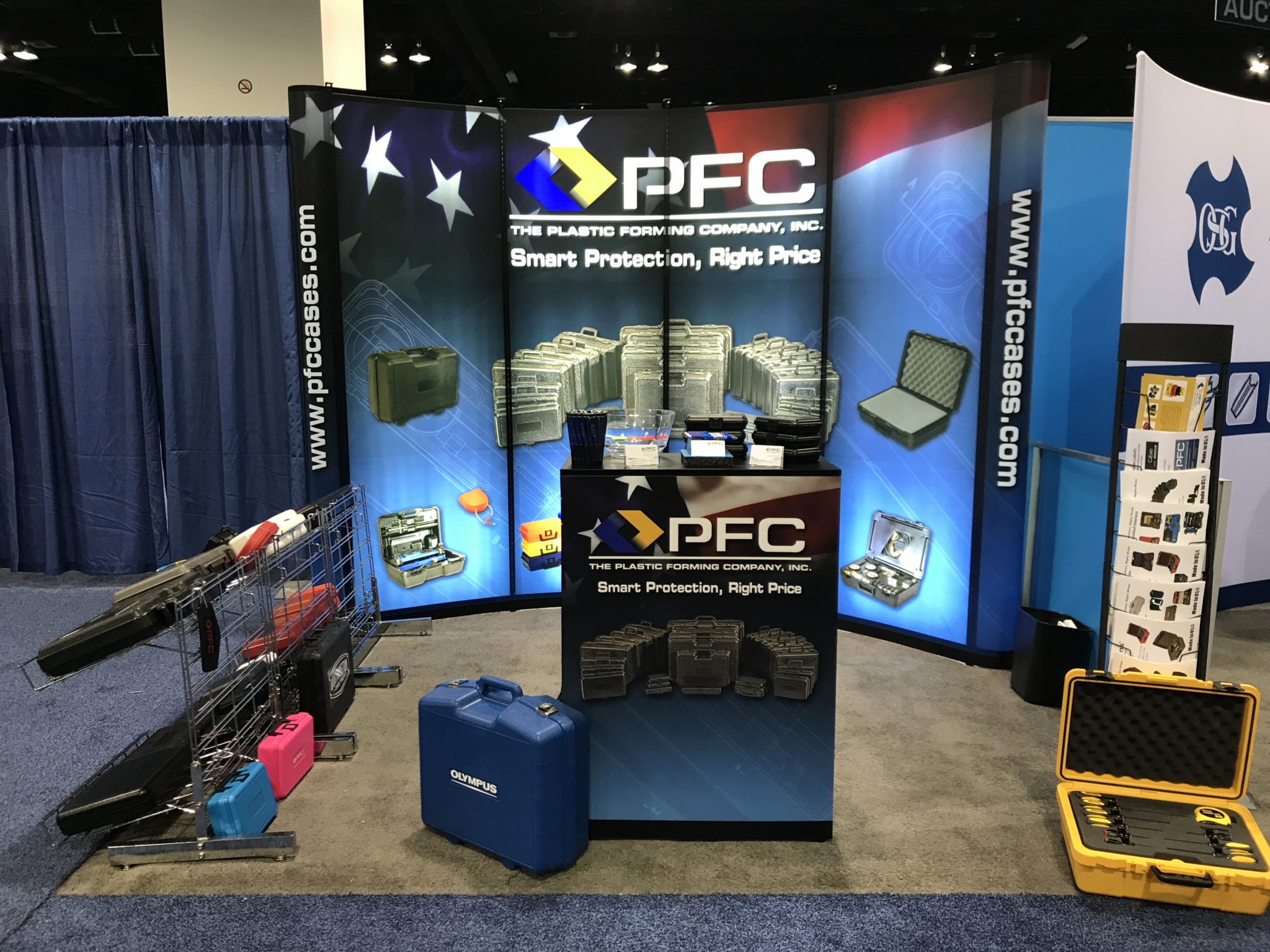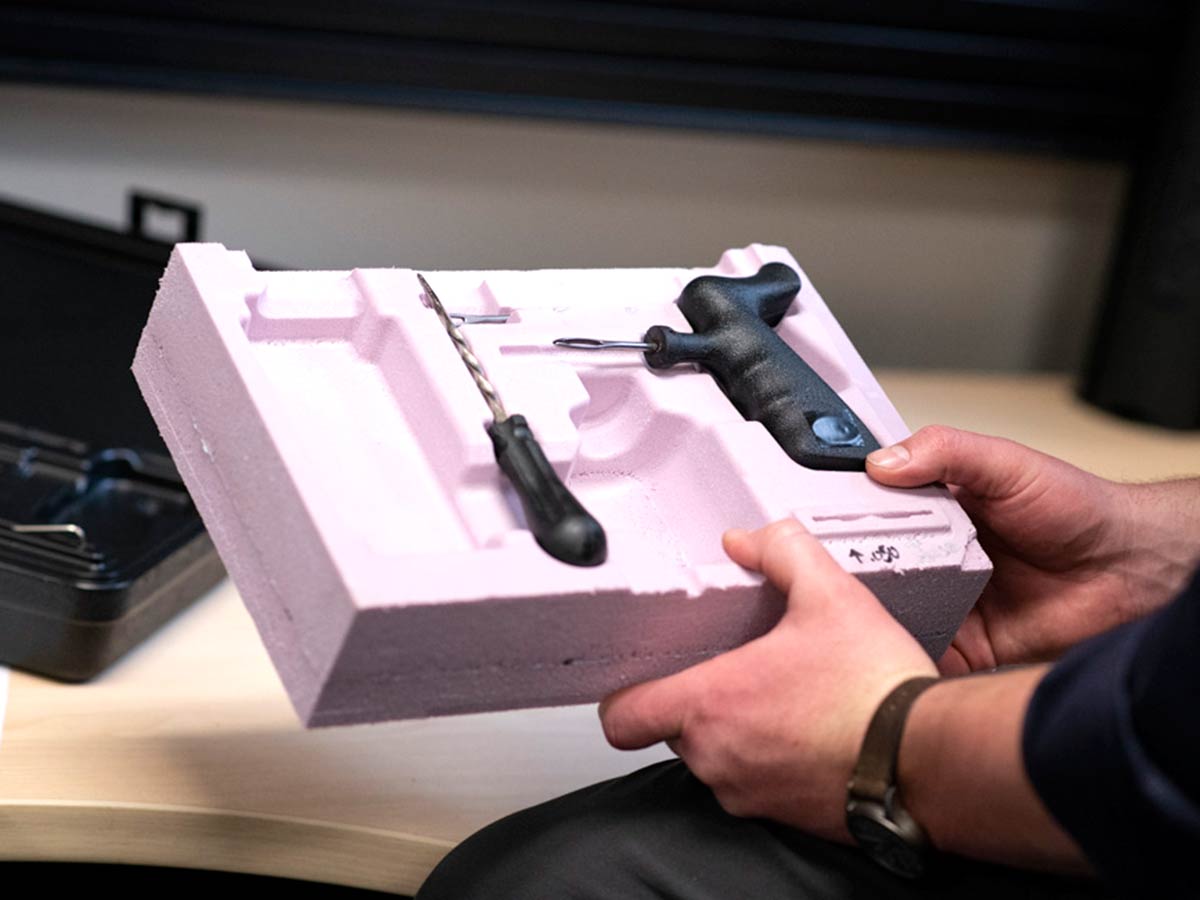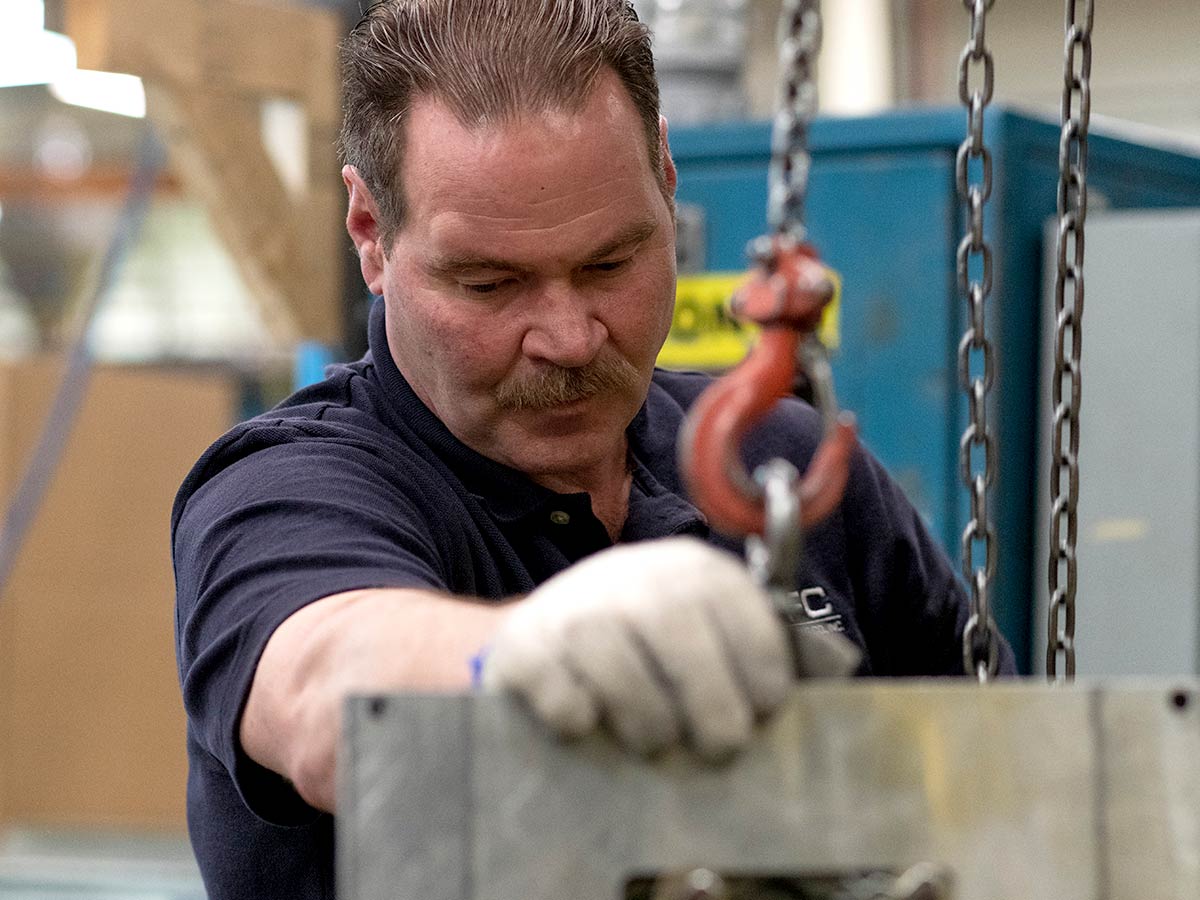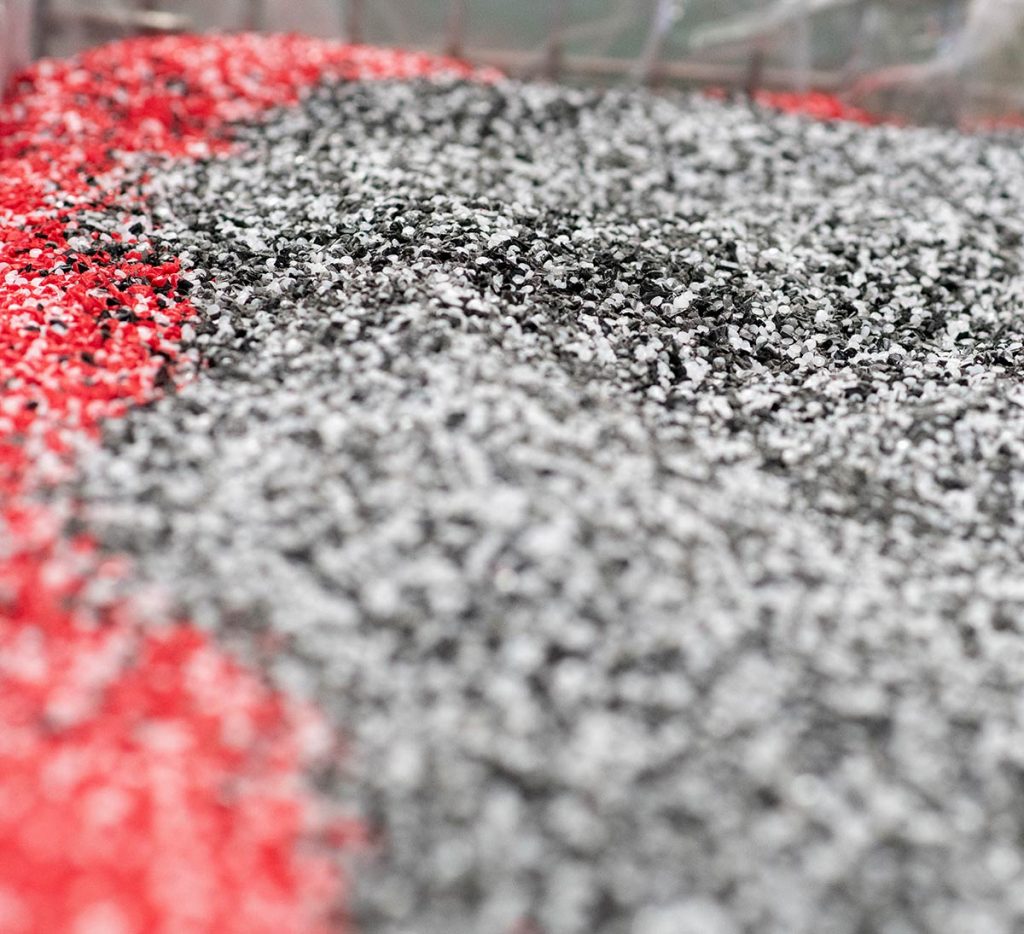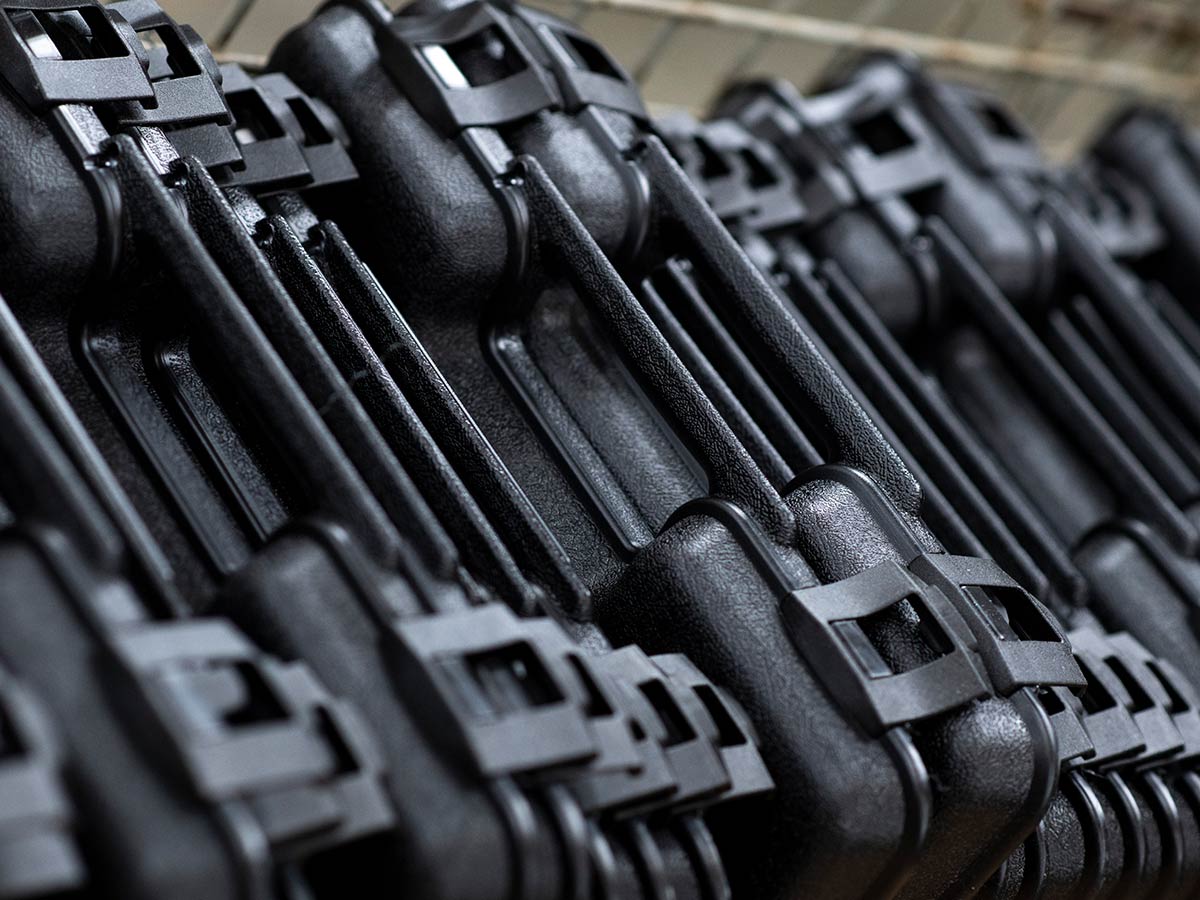
Making custom carrying cases for over 40 years
We do everything right here in the U.S.A. – design, mold engineering, and manufacturing
We source our materials domestically, we don’t subcontract work to other companies, and we don’t outsource anything to foreign manufacturers. Everything is made in one of our factories, where our teams work on site every day. Nothing is farmed out to other companies, here or overseas. Everyone at PFC takes responsibility for timely delivery and consistently high-quality cases free of defects. Because we are an employee-owned company, you can be sure everyone who works on your specialty case has a vested interest in making you happy. Whether it’s an initial product run, a reorder, or a stock case off the shelf, you can expect to receive a quality case that makes you, and us, proud.

Letter From Our President
When Peter Schurman invented the double-wall blow molded carrying case in the 1960s, he revolutionized the packaging industry. Nothing else on the market came close to offering the same combination of product display and protection, design flexibility, and value.
And that’s just as true today as it was 60 years ago.
Doing business is more challenging than ever. Advancements in technology, communication, and transportation have made markets and competition increasingly global. At the same time, those markets have become more specialized. New products need to be developed and brought to market faster. And product life cycles are shorter. Add to that the vagaries of global supply chains, inflation not seen in a generation, and tariffs.
What to do?
At PFC, we think the answer is to concentrate on the fundamentals – doing everything we can to help our customers meet each and every unique challenge they face. We’ve focused our entire business – every person, every process, every piece of equipment – to be responsive and agile. For example, because it is often difficult for our customers to predict the demand for their products and to know how many cases they will need, where they will need them, and when, we provide just-in-time delivery and logistical assistance. When a customer needed to package a half dozen kits with the same basic tool but with different sets of accessories, we were able to invent and patent a molded “shoe” insert that allowed them to use the same basic case and warehouse a single SKU.
One of the most exciting things about our business is the incredible variety of customers. Each year we sell cases to hundreds of different companies, and, over the years, we’ve made cases for over 5,000 products as varied as industrial diagnostic tools, mine safety equipment, medical implants and bone growth stimulators – even a portable drill used on the Space Shuttle and delicate electronics used on nuclear submarines. We are particularly adept at learning about each customer’s business and products, their requirements and objectives, the challenges they face, and figuring out how we can add the most value.
At PFC, we do everything inhouse and here in the U.S.A. and we always will. We don’t subcontract work to other companies; we don’t make anything offshore.
We look forward to working with you.
John C. Womer
President of PFC
Management Team
“If your actions inspire others to dream more, do more and become more, you are a leader.”
John Quincy Adams
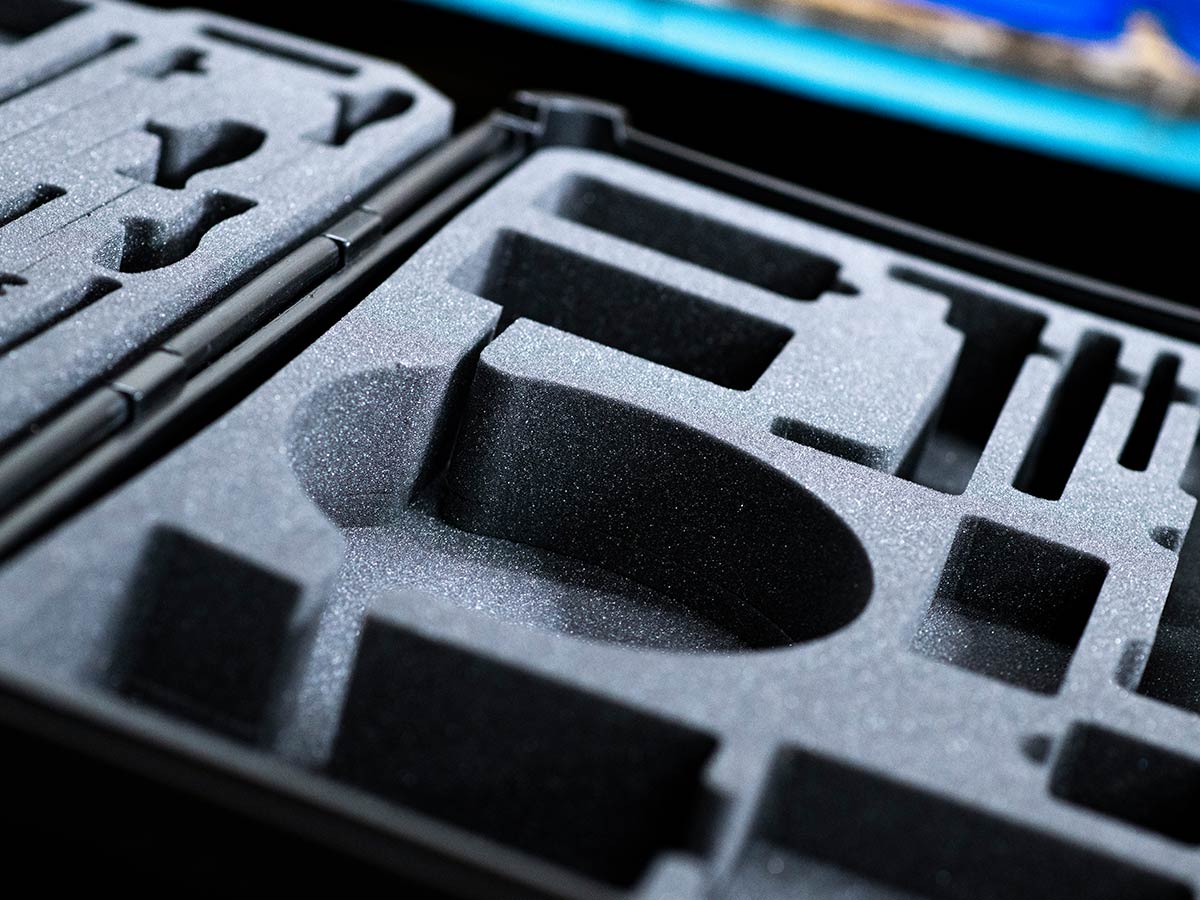
Did You Know?
PFC’s founder was the inventor of the blow-molded case
How it started
With a simple kitchen stool
In late 1963, Peter T. Schurman was working to develop a new blow molded step for a Hamilton Cosco kitchen stool. While inspecting two prototype parts one day, it dawned on Schurman that if he joined two of those steps together with some kind of hinge, he would create a rectangular box with interior compartments that could be used as a package – in other words, a double-wall blow molded case.
Establishing
The Plastic Forming Company
In 1966, Schurman founded The Plastic Forming Company (PFC) in Woodbridge, Connecticut. In 1969, PFC entered the double-wall blow molded carrying case business using a new process that he developed.
For the following decade, and driven by continuous product and process improvements, PFC-type cases gained wide acceptance owing to their unique combination of extreme durability, product protection, styling freedom, and moderate cost. The market and the Company grew rapidly as these cases became the preferred method to package a wide variety of consumer and industrial products. For a time, PFC ceased case manufacturing to concentrate on product design and development, mold building, and the design, development, manufacture, and sale of blow molding equipment for its many licensees.
Continuous Improvements
Developing Proprietary Systems
In the early 1980s, PFC resumed case manufacturing with an emphasis on the development of a proprietary line of cases to package the broad array of products which continues today.
PFC Timeline
- 1963
- 1965
- 1966
- 1978
- 1979
- 1982
- 1982
- 1983
- 1988
- 1988
- 1989
- 1994
- 1998
- 2000
- 2000
- 2001
- 2008
- 2009
- 2009
- 2010
- 2011
- 2017
- 2019
- 2020
Our employees are owners in the company
Employee Stock Ownership Plan
Since 1989, a significant portion of PFC has been owned by its employees through an Employee Stock Ownership Plan (ESOP).
An ESOP is not simply an employee benefit, it is real ownership, and it gives every PFC employee a stake in how well the company does. Extensive research shows that employees at ESOP companies are more dedicated and work harder; they feel better about themselves, their coworkers and their jobs; and they do a better job serving their customers. That is certainly true at PFC.
It’s really all about attitude. At PFC the only attitude you’ll find, in every department, is a positive one. Every one of our people understands that Customer Service is a shared responsibility. You can see it in how we strive to understand your needs, how we appreciate the critical importance of communicating accurate and timely information, and how we pay attention to the smallest details.

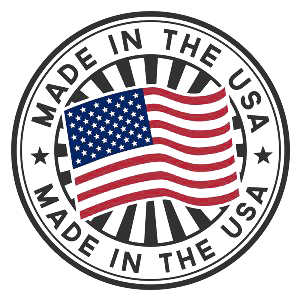
Made in the USA
Proudly designed and manufactured in the USA – now and always.
We’ve been making cases for over 50 years, and we do everything right here in the U.S.A. – design, mold engineering, and manufacturing. PFC is Headquartered in a 28,800 square foot office and manufacturing facility in Woodbridge, CT. PFC has an additional 40,000 square feet of manufacturing space in Massillon, Ohio.
We source our materials domestically, we don’t subcontract work to other companies, and we don’t outsource anything to foreign manufacturers. The Plastic Forming Company is a proud member of the Made in America Movement.
We care about sustainability
The Plastic Forming Company has long recognized that a sustainability plan benefits our company, our customers and our community.
As a company, we are committed to limiting our impact on the environment with a comprehensive sustainability policy. All PFC Cases and blow molded products are made from High Density Polyethylene (HDPE) the most environmentally stable and easily recycled of all plastics. HDPE gives off no harmful fumes and does not contain BPA, phthalates, heavy metals or allergens.
PFC recycles our scrap plastic either by regrinding it for use by PFC, or by sending it to a recycling center for use in other products. In addition to our plastic recycling program we make sure that the majority of our foam remnants, paper and used cardboard are sent out for recycling.
Freyja Womer
CEO
Having joined PFC in the fall of 2017 to succeed Ben Womer, Freyja Womer’s down to earth values and direct, no-nonsense management style come as no surprise given her rural upbringing as one of eight siblings in the hardscrabble Great North Woods of Vermont.
Like Ben, Freyja has an unwavering commitment to employee health and well-being, primarily through reducing the presence of food temptations that her fellow employees only thought they wanted to consume themselves, and, her “Take a Paws” canine relaxation initiative.
A dedicated amateur athlete, Freyja holds records in the 25 and 50 meter inter-office sprint and hurdles.
In addition, Freyja has pushed the organization towards both new product development and sustainability outside of the plastics industry, specifically the ancient art of ‘Chiengora’ – the spinning and knitting of natural canine fibers into custom sweaters, gloves, scarves, and ponchos using copious quantities of raw materials she produces herself on site.
John Womer
President
John began working for PFC part-time as a Molding Machine Operator, Material Handler, and Set-Up Mechanic during summers and school vacations. He joined the company full-time as a Technical Sales Representative in 1982 after earning his bachelor’s degree from The University of Rochester. During the following nine years, John served PFC as Sales Manager, Operations Manager, and Vice President and General Manager. In 1991, he was named PFC President. In 2003, Mr. Womer purchased the company from the Schurman family.
When not working at PFC (and sometimes when he should be), John enjoys piloting his own plane. He lives in Connecticut with his wife, Mary Beth, and they have four children and three grandchildren.
Mike Warth
Vice president & General Manager
Mike joined PFC in 1994 as the Assistant Production Manager in the newly opened Massillon, Ohio manufacturing plant. In the following 30 plus years, Mike has served in the roles of Production Manager, Plant Manager, Director of Manufacturing, and VP of Operations before his current position of Vice President and General Manager. Prior to joining PFC, Mike worked for Goodyear Aerospace and later Lockheed Martin supervising the assembly of electronic sub-systems for prototype defense and aeronautic projects. He earned an Associate’s degree in Engineering Technology from Stark State Technical College and a Bachelor of Science degree from the University of Akron.
In his spare time, Mike enjoys traveling, outdoor activities, and various real-estate ventures. He is also a state certified high school basketball official. Mike resides in Canal Fulton, Ohio. He can be reached at mwarth@pfccases.com.
Mary Beth Womer
Vice President & CFO
Mary Beth Womer joined PFC in 2012 and handled Accounts Payable and special accounting and financial analysis projects before moving into her current position of Director of Finance and Administration in 2015. Prior to joining PFC, Mary Beth worked for CIGNA as a group insurance underwriter and later Ernst & Young as a Health and Welfare Benefits Consultant and Area Resource Manager. She received her Bachelor of Arts degree in Economics and Italian from Middlebury College and an M.S.W. from Rutgers University.
Mary Beth lives in Woodbridge, Connecticut with her husband John, daughter Molly and PFC office dog Freyja.
Andrew Cross
Territory Manager
Andrew Cross joined PFC in August 2016. After studying mathematics and psychology in college, he decided to take a job in the commercial satellite industry. He worked in communications for 13 years as a technician, sales rep. and project manager. He then made a career move by joining a plastics sales and distribution company in 2002, and has been in the plastics industry for over 23 years as a broker, distributor and sales rep.
Andy resides in West Chester, PA with his wife of 30+ years, and 3 adult children that live close by. He enjoys being a grandfather, traveling with his wife, is an avid Philly sports fan and enjoys playing an occasional round of golf. Cross can be reached at across@pfccases.com.
Jacob Warth
Sales manager
Jacob Warth joined PFC in 2017. Prior to joining PFC, Jacob worked for Staples as a B2B sales consultant. He received his Sales Management Bachelor of Business Administration Degree from the University of Akron.
In his free time, Jacob is an avid fan of sports. Depending on the season, he can be found playing basketball, golf, softball or bowling. Jacob is a fan of the 3 Cleveland professional sports teams and the University of Notre Dame teams. Jacob lives in Massillon with his wife, 2 dogs, cat and the newest member of the family, a baby boy, Walker born in March 2025. Jacob can be reached at jwarth@pfccases.com.
Patrick Pietrantonio
engineering manager
Patrick Pietrantonio joined PFC in November 2005 after earning a Bachelor of Science degree in Industrial Design from Wentworth Institute of Technology. Patrick has continued his Post-Graduate education by completing numerous certificate courses ranging from CAD/ CAM programming to CNC Machining. Patrick manages the engineering department as well as the machine shop.
Patrick resides in Connecticut with his wife, two children and dog Bella. During his collegiate career Patrick Captained the Wentworth Men’s Soccer team and he continues to play competitively to this day. Patrick can be reached at ppietrantonio@pfccases.com.



